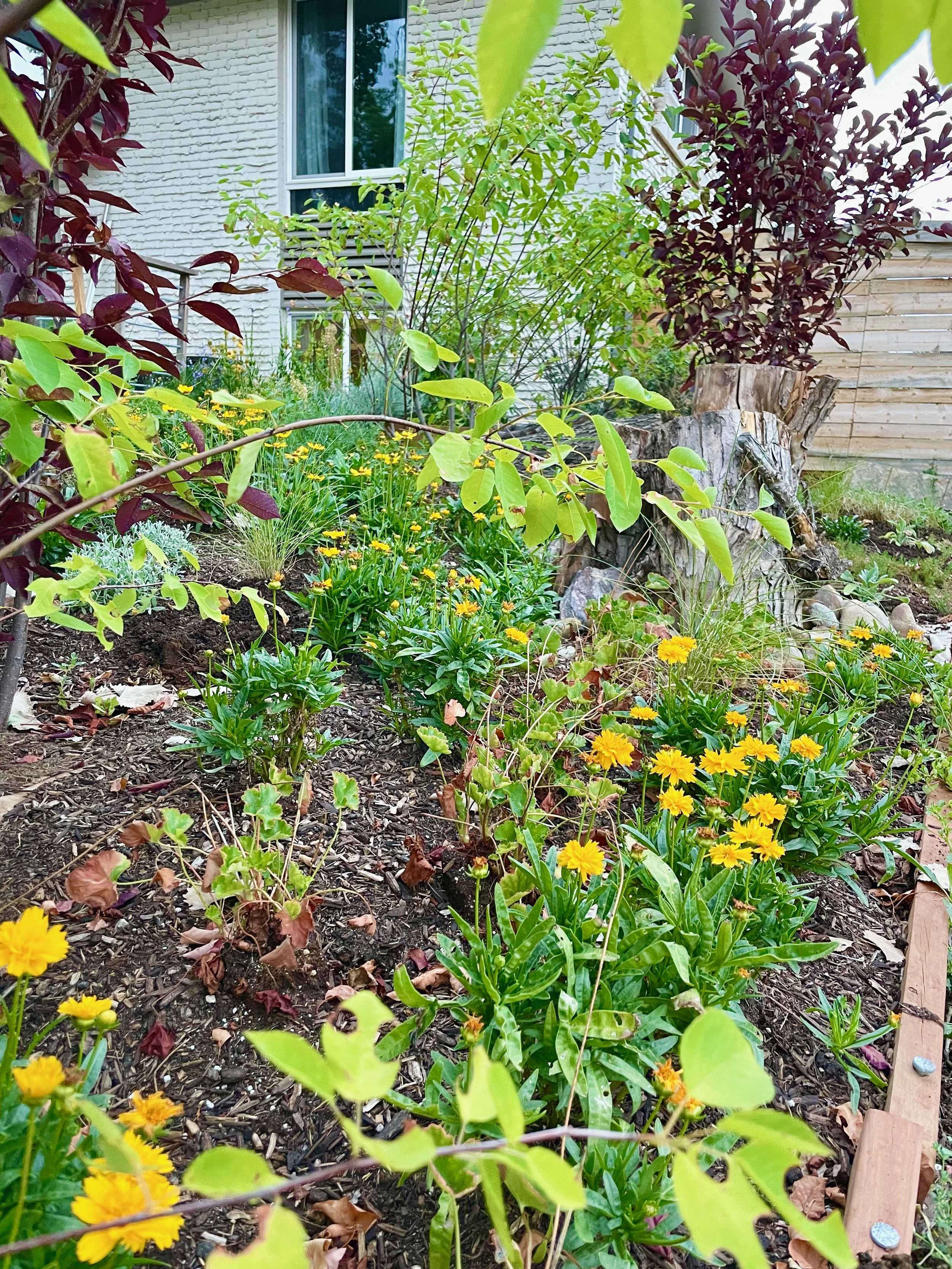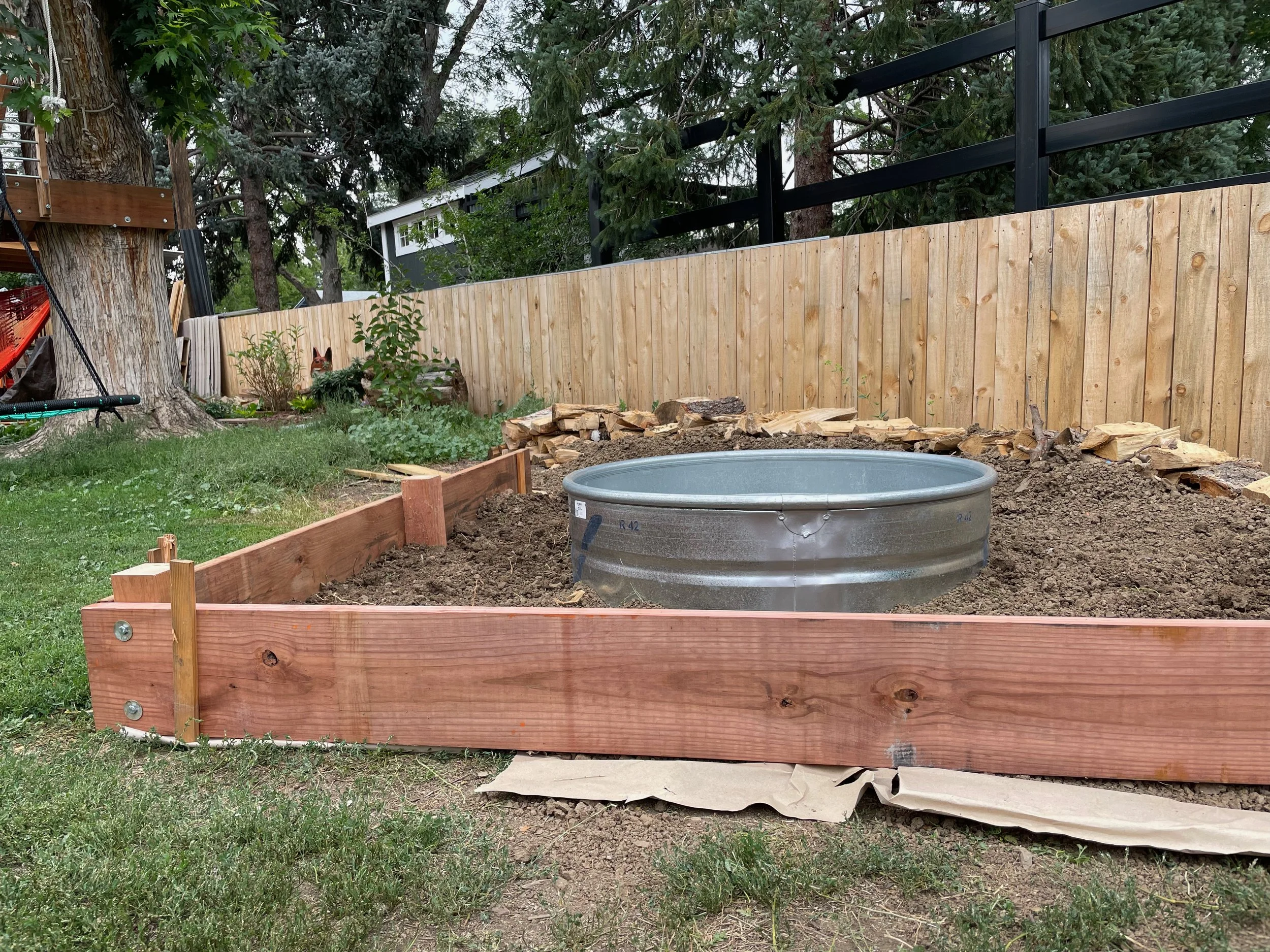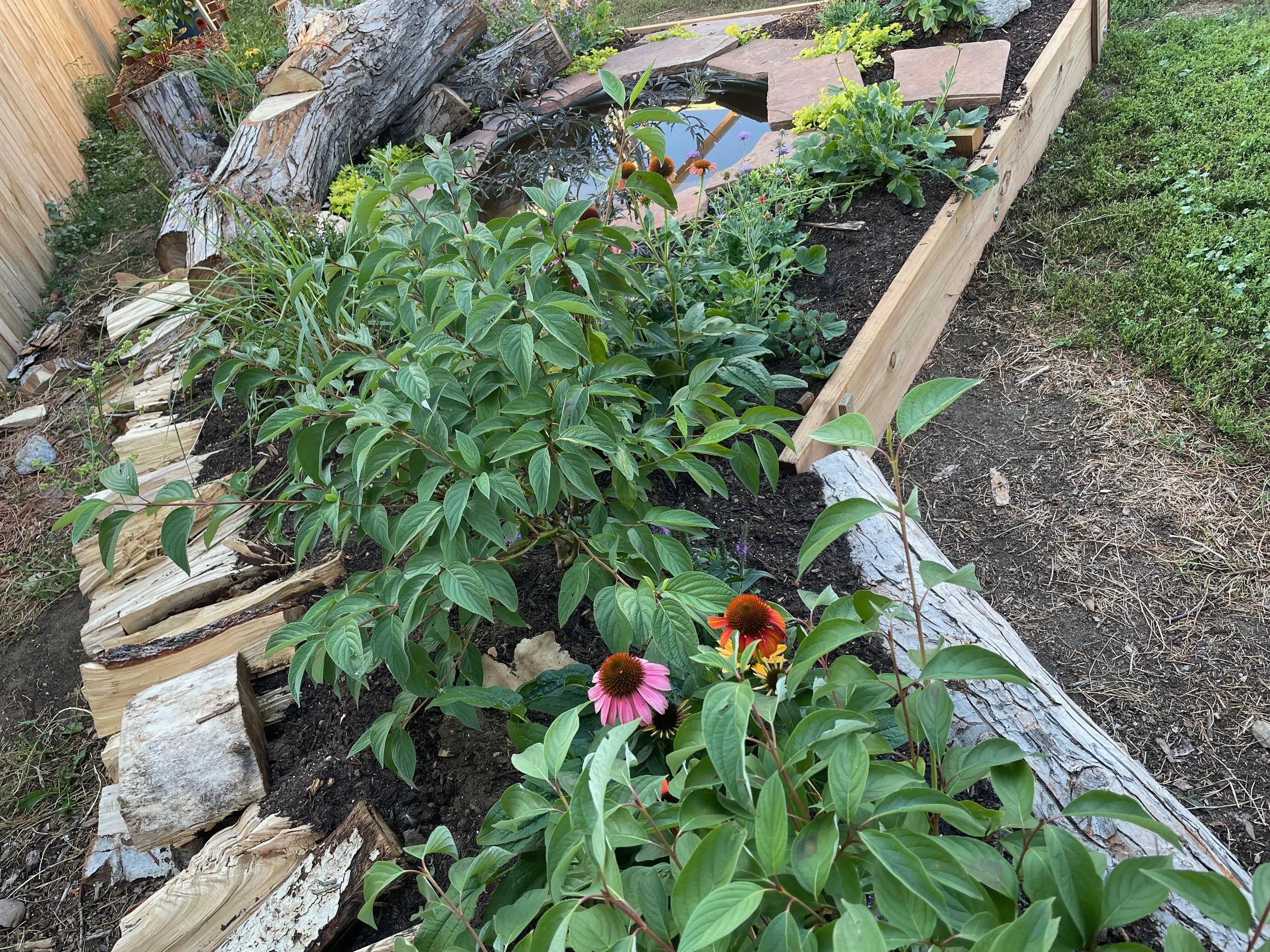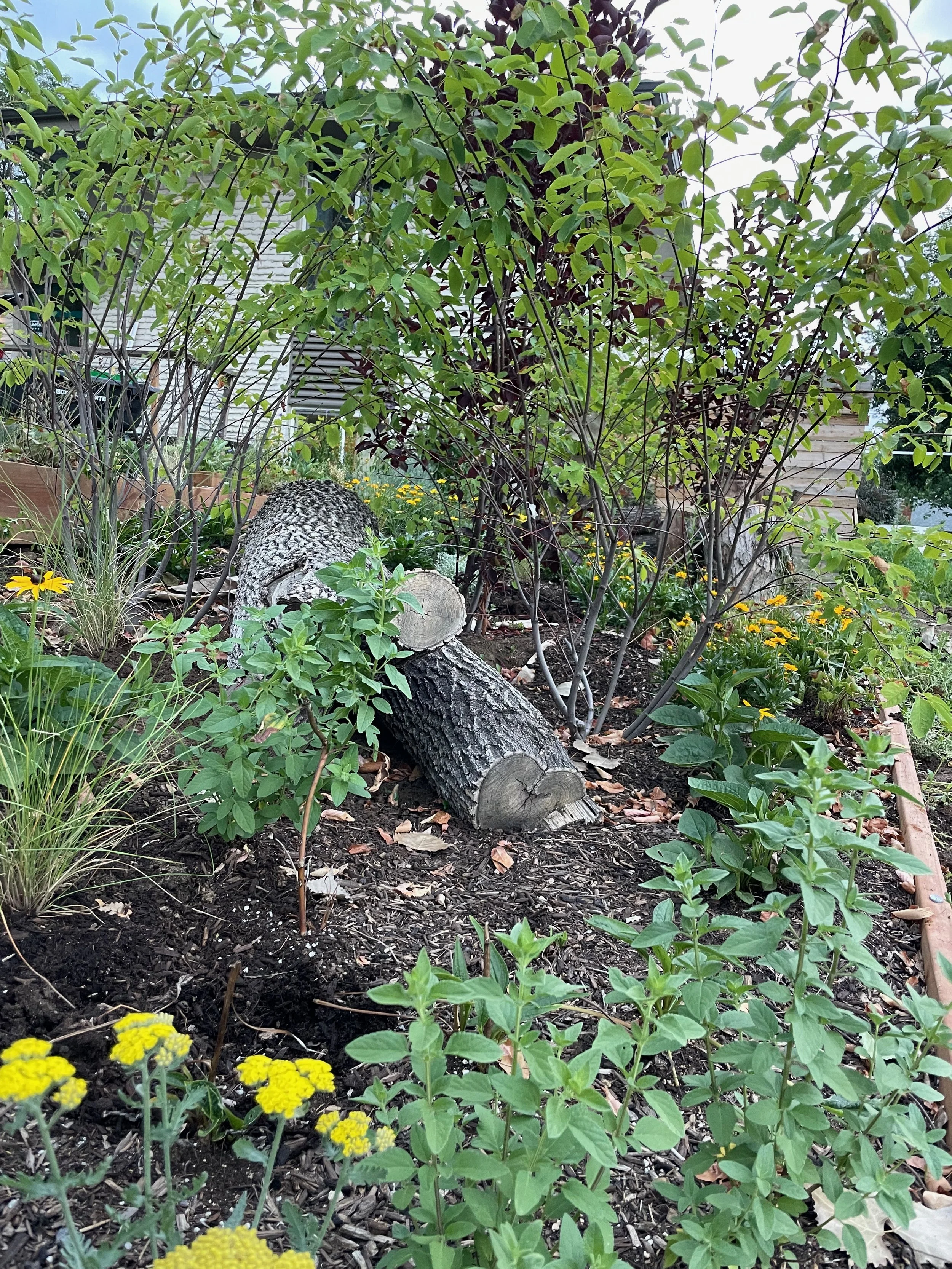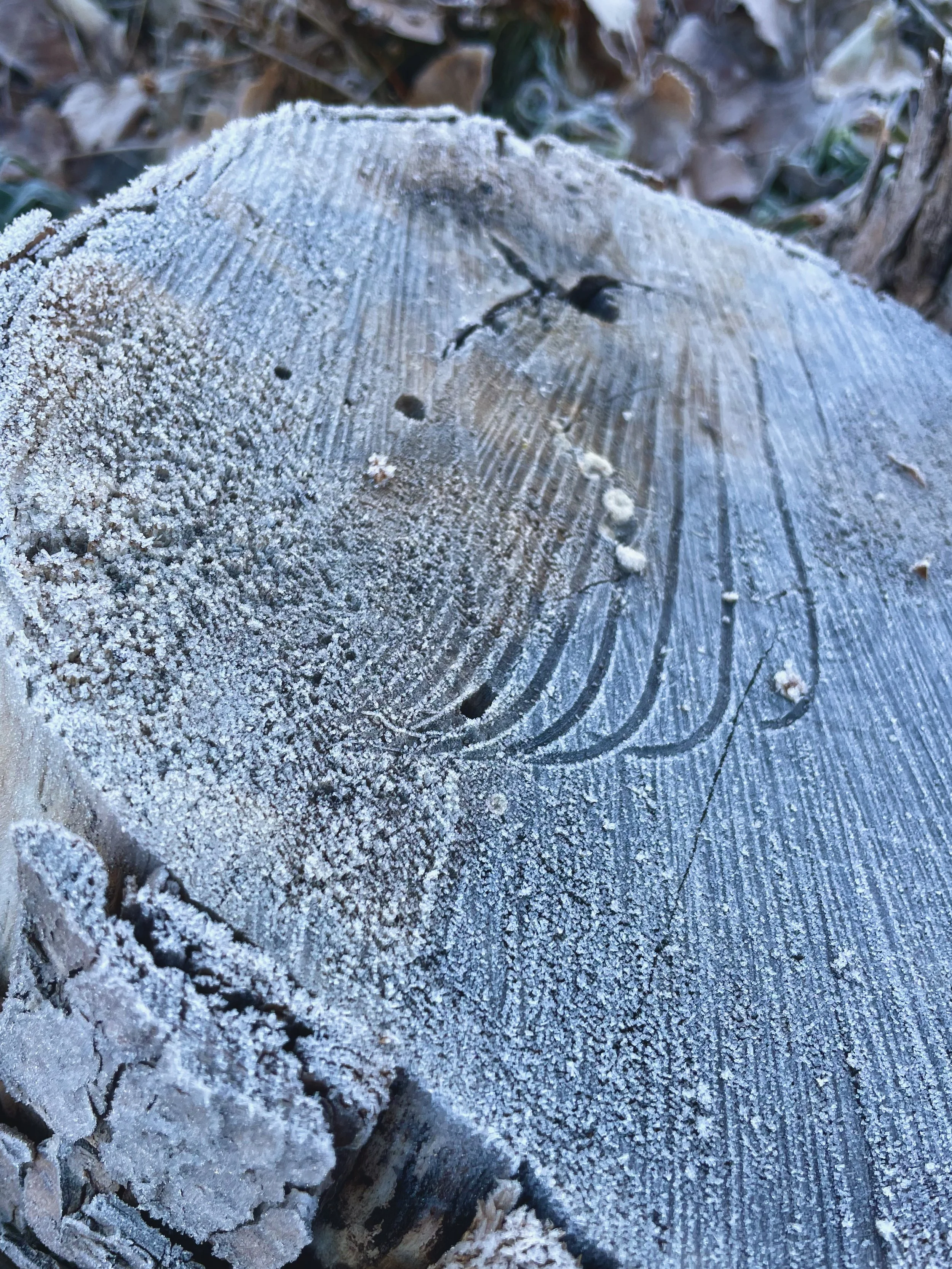Using Dead Wood in Your Garden
So here’s the thing about rotting wood: it is a missing link in many ecosystems. We are so quick to clean it up, and to make everything tidy that we remove an entire layer of a natural environment.
When a tree or a shrub dies in a wilderness setting, multitudes of creatures large and small set out to utilize that resource — and it is a resource. They may nest in the branches, hollow out nests in the trunk. They may burrow under the bark. Fungi grows within and on the bark of the tree, decomposing the wood slowly. The roots are rotted down little by little under ground by a whole host of microbial, fungal, and insect life. Eventually the tree falls and even more creatures are able to use the resources — eating, burrowing, hiding, nesting.
But when we remove those resources from our environment, we remove food sources, hiding and nesting places, shelter and nourishment from the circle of life. Intentionally returning wood to your garden can increase biodiversity and make for a flourishing garden.
I have done this in several ways in my own garden.
Stacked Wood Raised Bed
The first dead wood pile that we created is actually the backside of a raised bed that holds our pond. I was looking for an easy way to create a habitat pile, and we had some extra firewood laying around. So, we used the firewood as the back border on that raised bed. It works beautifully. Every spring I restack the wood and move it around a bit, but it holds the soil in, and we see tons of insects nesting and crawling about amongst the wood pile. It's only about 18" tall, but the stack is 15 feet wide and it runs directly into the Stumpery (more on that in a minute). It also faces the fence, so no one ever sees it.
The second dead wood source, however, is a lot more prominent.
Snags and Stumperies





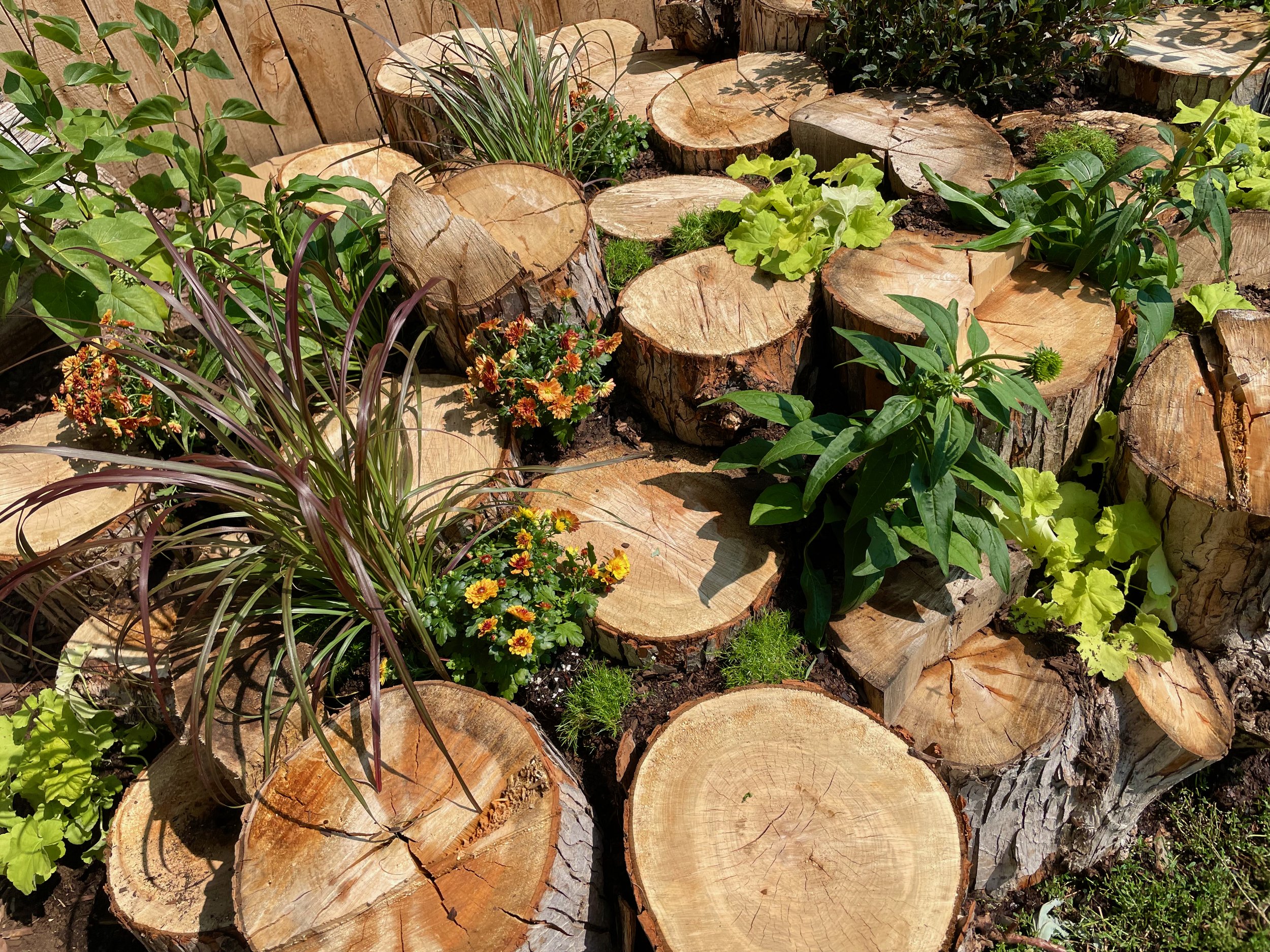
Meet Mabel the Maple. Mable is a Sugar Maple tree and was probably about 60 years old when we bought our home. But she was sick. When our neighborhood was built in the late 1950’s, almost every backyard was planted with a maple tree and a blue spruce. In the late 50s, the Colorado Front Range got about 20% more rain each year than it gets now. So those sugar maples in their young lives, got plenty of rain. They were smaller trees and didn't need as much water.
But as the climate has changed – and the trees got bigger – the available rain became less and less adequate for the trees. Sugar Maples are not native to Colorado anyway, and they weren't a good tree choice to begin with. But 65 years ago, they would have been ok. Now it is a different story.
When we bought our house about seven years ago, Mabel was already sick. There were some fungal growths off of her trunk, and her canopy became thinner and thinner over the course of just a few years. There simply was not enough rain to sustain a huge maple tree, and we couldn’t water enough to keep her healthy.
So we had to take her down. But we didn’t have them remove all of her. We had them turn her into a snag. A snag is a standing dead tree which, over time, loses its limbs, hollows out, and decays over decades.
The tree surgeons shredded very little of Mabel: just the smaller branches, and if I had to do it over again, I don’t think I would’ve had them take anything.
We cut Mabel's larger branches into chunks from which we formed a stumpery. Stumperies are somewhat common in the UK. They are usually planted out with ferns and are found in very shady locations, deep in the woods of gardens and botanical parks. But our stumpery is in a pretty sunny location. I filled the cavities between the stumps with soil, and I planted it out with native North American perennials including grasses and heuchera. Our dogs love standing on the stumpery, and it is filled with life from mice to mushrooms.
We also left the trunk of the tree. It was already supporting our treehouse, but that could have been fixed. I didn’t want to lose that giant biomass. And I am so thankful that we left it!
We have watched birds build nests inside the branches. We have watched squirrels have generations of babies in a giant hole in the trunk. There are fungi and all kinds of other creatures at work, decomposing that trunk little by little.
We also have an intimate view of the Pigeon tremex horntail and the Giant Ichneumon Wasp. These are two native insects that need dead or dying hardwood trees. The Pigeon Tremex is a non-stinging wasp that bore into Maple trees. They lay their eggs under the bark and introduce white rot fungus when they do. The fungus accelerates the tree's decay and feeds the Pigeon Tremex larvae. The Giant Ichneumon Wasp can detect the presence of Pigeon Tremex larvae, and the female lays her eggs in the larvae of the Horntail which the Ichneumon larvae eats when it hatches a few weeks later. This whole insect soap opera plays out right by the tree swing.
Yes, I do check the tree swing for safety rather frequently. At some point that limb will not be safe to swing on anymore. but it’s Maple wood. And anyone who has worked with wood knows maple is tight-grained and very slow to rot. So we have time!
Dead Wood
in the Wildlife Garden
We also had to take down a poorly-pruned Ash tree in our front yard. It was an invitation to Emerald Ash Borers, because it was threatening to split in several places. But that tree became part of the Wildlife Garden. We cut the branches into smaller pieces, and stacked them like logs. The trunk was cut into larger pieces which are providing habitat and shade and slowly starting to decompose.
Over what will probably be decades, the Ash tree and Mable will both return to the soil in which they grew. But the increased presence of wildlife is already quite apparent. Certainly we had birds before, but the species have changed and the snag makes them more visible, too. We have observed Northern Flickers, Downy Woodpeckers, and White-Breasted Nuthatches nesting in the cavities of Mable's branches and trunk. And we frequently see Blue Jays, Magpies, Black-capped Chickadees, American Robins,Yellow Warblers, Lazuli Buntings, and Mourning Doves in the Wildlife Garden.
The changes in the wood are slow. Bark is falling off. Sometimes a piece is tipped over. But I know that the piles of wood that are scattered around our gardens are providing habitat – often for things I can't even see. And that is revolutionary!
So, as you think about your garden this spring, think about making a place for some wood to just sit, to be, to do its thing on a timeline we don't control – or even really understand. If you aren't taking down a tree, watch your neighborhood. The next time someone is having a tree taken down, ask for a few chunks of the trunk. Most tree services are glad to provide it! There is even a tree service near me that leaves wood out for free by their front entrance. It's intended for firewood, but it works perfectly well in a garden, too.
You could consider a branch hedge. I haven't built one yet, but I love the idea of creating a hedge from branches – so many nesting places for so many little creatures!
Are there problems to consider? Depending on your location, possibly. We are close enough to rattlesnake habitat that I am cautious, for example, but it would take a lot for a rattlesnake to make it to our neighborhood. Some of you may live in places where termites are an issue. Keep piles of dead wood at least 20 feet from your house. And in fire-prone locations, keeping wood away from your house is also important.
But most of us can find a place for even a small pile of branches, logs, or sticks in our garden. An invitation to small creatures, a bit of habitat, a long, slow decay which will help nurture your ecosystem for decades and beyond.
If you are like me and like to geek out on this kind of thing, I have two references for you:
Into the Woods Podcast (Episode 39): hosted by Lauren Grand, Oregon State University Extension Forester and Associate Professor of Practice with Guest, Ken Bevis, who is a stewardship wildlife biologist for the Washington State Department of Natural Resources. This is a fabulous conversation about the role of dead wood in forests and how the idea of "Hazard to Habitat" has a role to play in urban and suburban settings as well as in forestry – making dead trees safe, but leaving them in place as habitat for the multitudes of creatures who need them.
Dead Wood: the Afterlife of Trees by Ellen Wohl: Wohl is a professor at Colorado State University who specializes in the formation of rivers and the interaction between rivers and trees. Her research gave rise to this excellent book which follows the afterlife of several trees and how integral they are to their environments once they die.
Additional Resources:
"Creating Wildlife Habitats with Dead Wood." Gardening Solutions, University of Florida Institute of Food and Agricultural Sciences, https://gardeningsolutions.ifas.ufl.edu/design/gardening-with-wildlife/creating-wildlife-habitats-with-dead-wood/.
"Dead Wood for Wildlife." Penn State Extension, The Pennsylvania State University, https://extension.psu.edu/dead-wood-for-wildlife.
"Enhancing Wildlife Habitat: Brush Piles and Snags." Private Forests, The Pennsylvania State University, https://ecosystems.psu.edu/research/centers/private-forests/news/enhancing-wildlife-habitat-brush-piles-and-snags-1.


